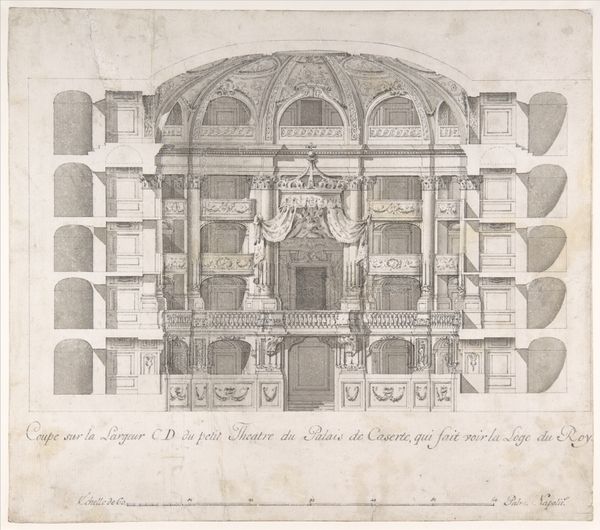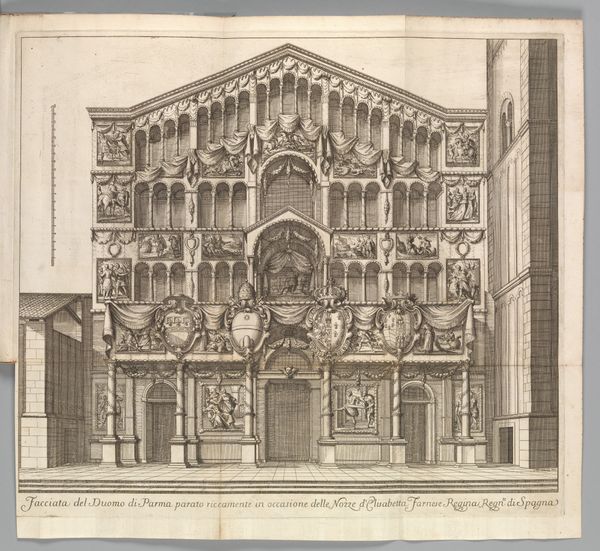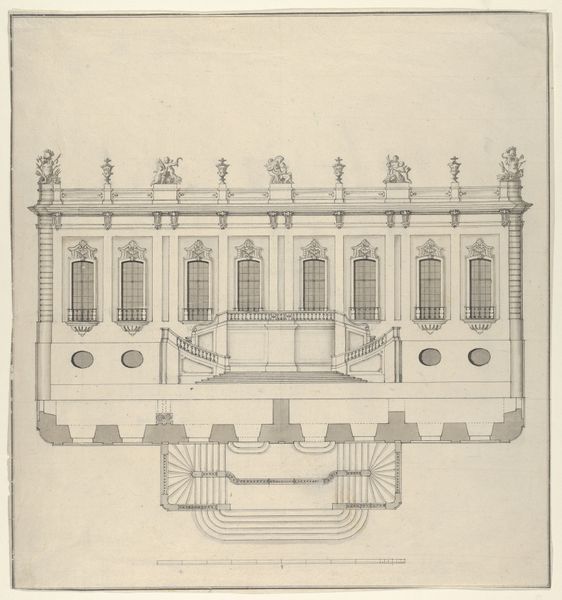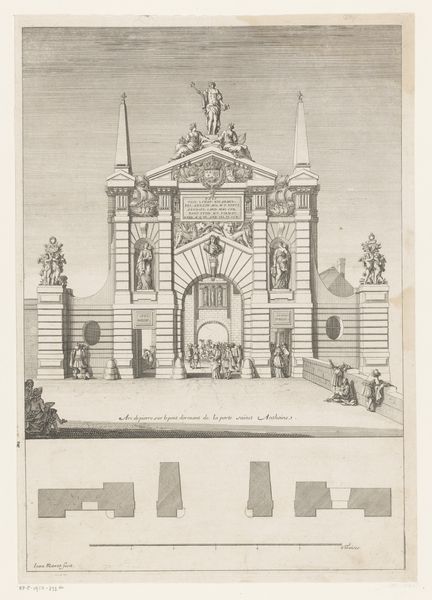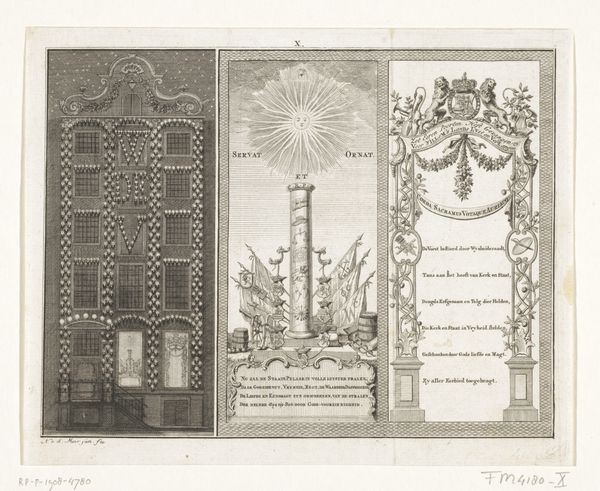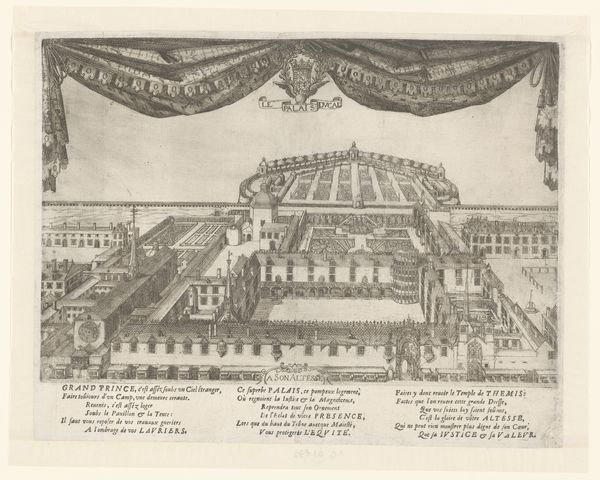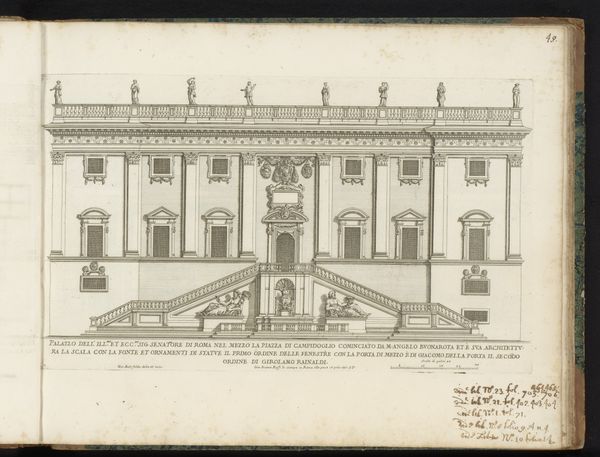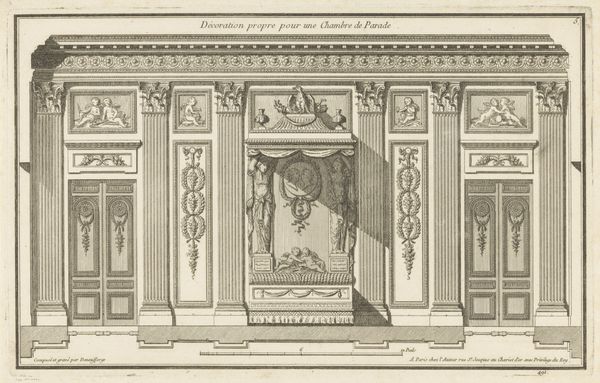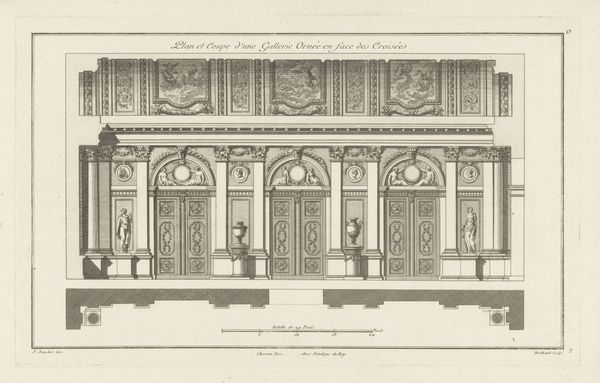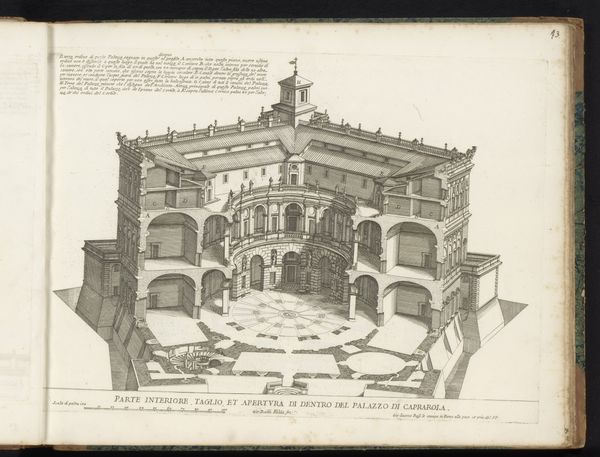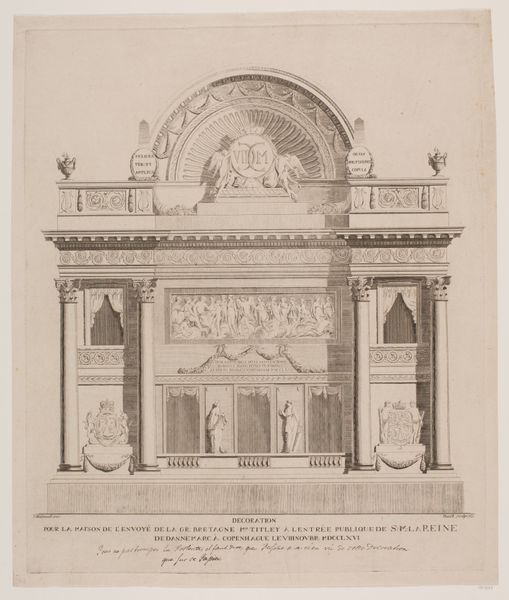
Plattegrond van de zitplaatsen in de Oosterkerk te Amsterdam 1685 - 1726
0:00
0:00
drawing, print, paper, ink, engraving, architecture
#
drawing
#
medieval
#
baroque
# print
#
perspective
#
paper
#
ink
#
geometric
#
cityscape
#
engraving
#
architecture
Dimensions: height 528 mm, width 726 mm
Copyright: Rijks Museum: Open Domain
Curator: What a fascinating artifact we have here, this "Plattegrond van de zitplaatsen in de Oosterkerk te Amsterdam," or plan of the seating in the Eastern Church in Amsterdam. The engraving, crafted between 1685 and 1726, offers a glimpse into the social fabric of the time. Editor: My immediate impression is one of rigid structure. The geometric patterns of the seating arrangements seem to reflect a highly organized social hierarchy. The meticulous execution really conveys the atmosphere. Curator: Indeed. The artist, Daniël Stopendaal, employed ink on paper to create this piece, using engraving techniques to bring the architecture to life. Observe the deliberate use of perspective, creating depth. This precision adds to the overall sense of order, even control. It is about architecture, but mostly, about the spaces carved up inside for bodies. Editor: Let’s think about the process of making such a detailed print. Each line meticulously etched into the printing plate. This labor reflects not just an artistic process but a mode of production reliant on skilled craftsmanship. There are questions about Stopendaal and who employed him to do this, but the drawing, its labor and value as both a practical piece, used to allocate space, and as a document or even art, adds up to so many interesting angles of access. Curator: From a structuralist perspective, the "Plattegrond" functions as a sign system. The spatial organization within the church communicates a clear message about the distribution of power and status within the community. The composition is carefully arranged to reflect these dynamics. Editor: It seems like these spatial hierarchies affected the materiality of the building. It is tempting to think of who might be missing, the working-class members unable to be there, or their perspective is lost here? What about the choice of material—why paper and ink, and how does this choice serve the document's function as both art and social record? I want to ask these hard questions, knowing our social landscape of inequity is very much intact. Curator: It is indeed a multifaceted work. The visual elements provide a structured narrative open to decoding, as are the stories of social context that informed the image's making. Editor: Ultimately, it prompts us to consider how architectural spaces are both shaped by and shape social dynamics, and consider the processes by which all this becomes visualized and accessible. I’m glad this drawing lives in the Rijksmuseum to allow that.
Comments
No comments
Be the first to comment and join the conversation on the ultimate creative platform.
